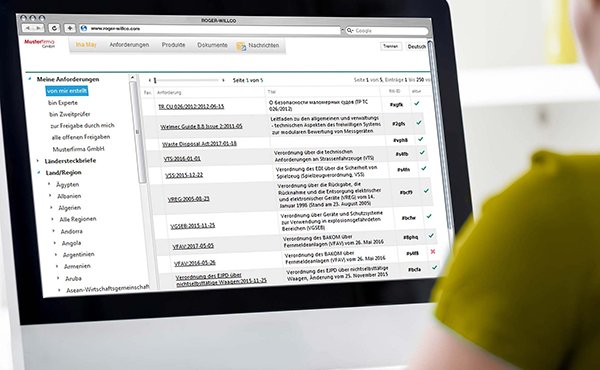A new list of Harmonized Standards relating to the Radio Equipment Directive 2014/53/EU was published in the Official Journal of the European Union on 10.11.2022. This list entered into force just one day after its publication.
There is a lot of light and shadow. With the entry into force, all previous lists became invalid. This is actually good news, because it means there is currently only one complete list of standards. Is it to be expected that the next list will be published in full again? There is no indication of this.
Because of the many listings with restrictions, it is advisable to take a close look at the justifications for this publication. In total, around 40 of the 163 standards are listed with restrictions and therefore do not readily satisfy the presumption of conformity. In many cases, therefore, the involvement of a Notified Body will be necessary.
EN 301 489-XX series
EMC radio product standards of the EN 301 489-XX series have been listed for the first time:
- EN 301 489-12 V3.2.1 EMC for satellite interactive fixed earth stations (FSS) (4-30 GHz).
- EN 301 489-20 V2.2.1 EMC for interactive mobile earth stations (MSS) for satellites
- EN 301 489-52 V1.2.1 EMC for cellular terminals and their ancillary equipment
But the joy lasts only as long as it takes to look into the details. There is the same note for all three standards:
Note: Compliance with this harmonized standard does not give rise to a presumption of conformity with the essential requirement referred to in Article 3(1)(b) of Directive 2014/53/EU if tolerances for the structure are applied in accordance with ETSI EN 301 489-1 (V2.2.3) (11-2019), which is cited as a normative reference in this harmonized standard [1].
So, first of all, no presumption of conformity. Why? Further explanation in the Official Journal under recitals:
(7) Harmonized standards EN 301 489-12 V3.2.1, EN 301 489-20 V2.2.1 and EN 301 489-52 V1.2.1 contain tolerances for the structure. This element goes beyond the purpose of a harmonized standard in support of Union legislation in that it addresses specific aspects of test equipment rather than focusing on results.
The references of the above harmonized standards should therefore be published, with restrictions, in the Official Journal of the European Union.
All EMC radio product standards in the ETSI EN 301 489-XX series refer to the General Radio EMC standard ETSI EN 301 489-1 (V2.2.3) (11-2019). This is not listed in the Official Journal because in some places it leaves too much freedom to the user. This is not desired by the EU Commission.
However, the EU Commission has found another point, which it includes more precisely in the reviews: It is the tolerances. (See also our further article on this.) These tolerances do not refer to the measurement accuracies, as a Commission spokesman stated in a meeting. However, nowhere in EN 301 489-1 is there any mention of tolerances. What tolerances could the EU Commission have meant in ETSI EN 301 489-1 (V2.2.3) (11-2019)? Here are a few possibilities we could think of:
- Point 4 Test conditions
Here are the general requirements for the tests. The test setups are specified in the respective test procedure standards. - Point 4.2.3 Arrangements for test signals at the RF input of receivers
The level of the wanted RF input signal shall be set to a maximum of 40 dB above the minimum usable receiver signal level.
The specification "up to 40 dB" could be too imprecise for the EU Commission. - Point 4.3 Exclusion bands
Are the limits 250% too wide here? - Point 9.2 / 9.5 Interference immunity
There is no minimum duration for the "dwell time".
So for the time being we are left in the dark as to what the EU Commission is criticizing in more detail. It is good that in the absence of a presumption of conformity with EMC standards, no "Notified Body" is required for evaluation. The manufacturer can do this himself.
EN 301 489-52 V1.2.1 (2021-11) EMC for cellular terminals and their ancillary equipment
Original title: ElectroMagnetic Compatibility (EMC) standard for radio equipment and services;
Part 52: Specific conditions for Cellular Communication User Equipment (UE) radio and ancillary equipment;
Harmonised Standard for ElectroMagnetic Compatibility
This makes it clear that the predecessor EN 301 489-07 V1.3.1 (2005-11) is no longer applicable.
Please note that on the ETSI Internet site the history flag of all standards is not maintained, although it can be switched on and off for searches. It has no effect.
There is no transition period for this EMC standard in the Official Journal, since no predecessor standard has been listed under the Radio Equipment Directive so far. There are a few deadlines listed in the standard itself. The last deadline, which has not yet expired, is the withdrawal of national standards that may conflict with this standard. That must be done by Aug. 31, 2023.
The scope of the standard indicates that it applies to 2G, 3G, 4G, 5G technologies. Basically for all products of this type that are not Base Station. These are mobile devices (cell phone), mobile USB sticks, xG-WiFi hotspots, and set top boxes and anything that can be connected to them.
EN 301 908-13 V13.2.1 User Equipment 4G Mobile Radio
A radio standard is listed with restriction and still the "Notified Body" is not needed? We think so.
Long awaited was the listing of this standard. Due to a missing antenna description in the previous listed version, a "Notified Body" always had to be consulted. But the new version of this standard was listed again with restrictions.
Note: Compliance with this harmonized standard does not give rise to a presumption of conformity with the essential requirement referred to in Article 3(2) of Directive 2014/53/EU if – when applying clause 4.2.2 of this harmonized standard – tolerances greater than 2 dB are applied.
Here, the Commission's reasoning is clear. The section that is criticized by the Commission is section 4.2.2 "Conformance Requirement Transmitter Maximum Output Power".
According to EU Decision 2010/267/EU, such tolerances may only be a maximum of +2 dB. However, tolerances of +2.7 dB to +3.0 dB can be found in the tables of the standard. Thus, for all 4G modules and devices, the maximum transmit power will have to be checked in the reports and perhaps the one or other firmware update will have to be made if one has measured a transmit power that is too high.
EN 301 908-13 V13.2.1 is applicable with immediate effect. The previous version 13.1.1. is no longer applicable as of May 10, 2024. Thus, as for most standards that had a predecessor in the Official Journal, we have a transition period of 18 months.
In this article, we have highlighted 4 standards out of the 40 standards that have been listed with restrictions. For more details, we would be happy to advise you. Feel free to contact us!









